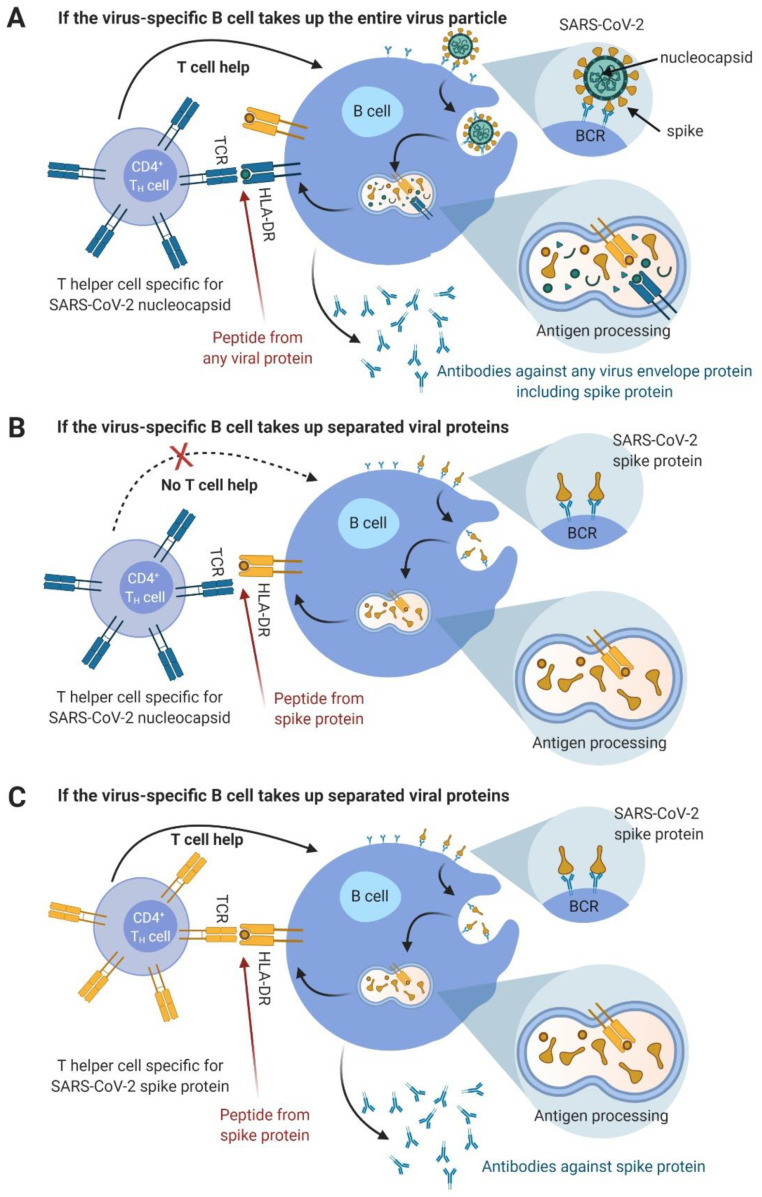Figure 1.
Illustration of the potential interactions between SARS-CoV-2 and B and T cells. (A) If a virus-specific B cell takes up the entire virus particle via B cell receptor (BCR)-mediated phagocytosis, all structural viral proteins should be processed in the HLA class II processing vesicle. The resulting peptides should be loaded onto the HLA class II molecules. For a review, see Avalos et al. (2014) [14]. Only a selection of the resulting peptides fit to the respective HLA molecules present, based on their peptide specificity. The B cell will then present these peptides on the cell surface, with one peptide per HLA molecule. If a T cell is specific for exactly this peptide–HLA combination and if the B cell is activated via its BCR–antigen contact, then the CD4 T helper cell would deliver help to this B cell, both through cellular interaction and cytokines. Since all viral proteins are presented on the B cell’s HLA in this scenario, a nucleocapsid-specific T cell also activates a spike-specific B cell. (B) If the virus-specific B cell takes up separate viral proteins via BCR-mediated phagocytosis, e.g., after previous destruction of viral particles by follicular dendritic cells, only peptides from these proteins are presented on the B cell’s HLA molecules. This is shown here for the spike glycoprotein. Thus, a nucleocapsid-specific T cell does not activate a spike-specific B cell in this constellation. (C) If the same B cells as described in (B) are activated by a spike-specific CD4 T helper cell, the B cell is now activated. Abbreviations: BCR—B cell receptor, HLA—human leucocyte antigen, SARS-CoV-2—severe acute respiratory syndrome coronavirus 2, TCR—T cell receptor. Figure was designed with BioRender.

